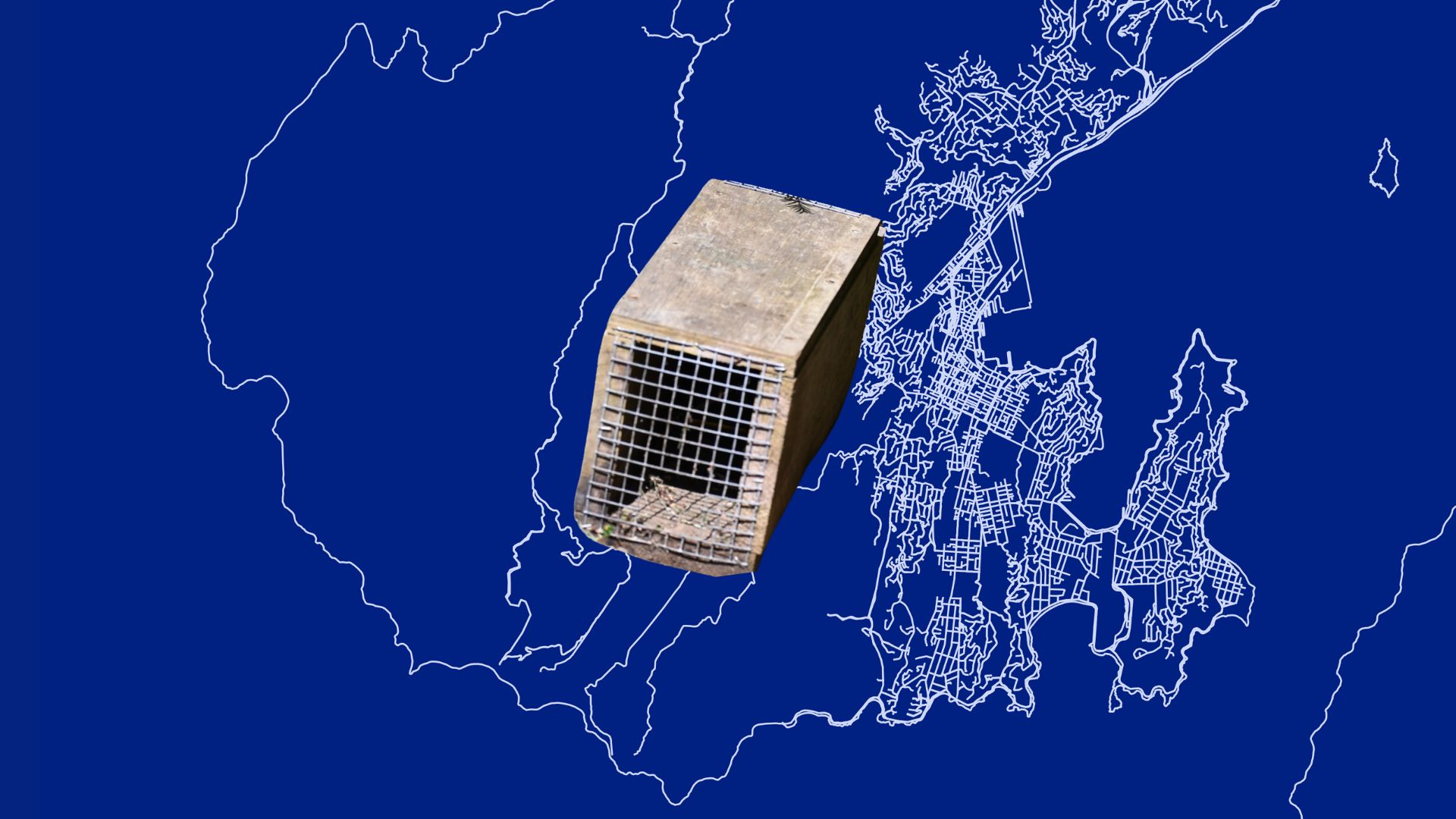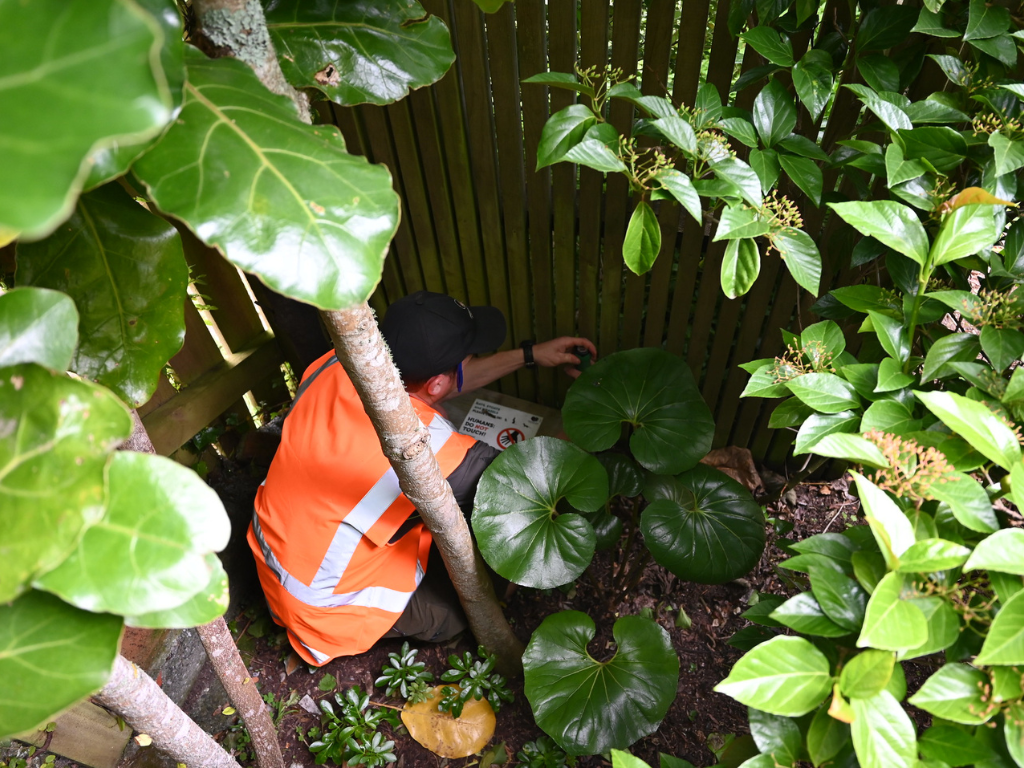Since 2019, Predator Free Wellington (PFW) has been working to rid the capital of rats, mustelids, and possums. As a world-first urban eradication project, it has required innovation and adaptation every step of the way. Five years in, it has documented its hard-earned knowledge in An Urban Predator-Free Blueprint (PDF, 5.2 MB).

This comprehensive guide is packed with valuable insights, but at over 60 pages, it’s a lot to digest. Here’s an abridged version, a shopping list of predator free must-haves:
1. A flexible plan
PFW developed a “rolling front” strategy, eradicating rats zone-by-zone and gradually pushing the boundary across the city. While this overarching plan remained constant, the details were intentionally flexible.
The plan divides the city into five phases. Phase one is the predator free Miramar Peninsula, and work is ongoing in phase two.
Each phase is divided into zones of around 40 hectares. The same five-step process happens in each zone: devices are installed, and rats are knocked down and eradicated from most areas. Attention then turns to any hotspots of remaining rat activity. Once there are no detections, they move into a biosecurity phase, maintaining predator free zones by monitoring and responding rapidly to incursions.

The blueprint emphasises the importance of adapting based on real-time data and challenges; it’s a living guide that will evolve as PFW learns more about urban predator control.
2. Community buy-in

PFW’s work relies on community support— backyard conservation in action. To achieve this, they needed residents to share their vision and grant permission to access properties across the city.
The blueprint outlines how PFW secured trust and participation through door-knocking, tailored messaging, and resources like flyers, factsheets, and sign-up forms.
The messaging guides are clear, open and honest. For example, the report outlines how they talk about toxins, “we emphasise that eradication should reduce the need for long-term toxin use and that risks are very low when used safely and responsibly.” Experts and local veterinarians helped develop the communication tools.
An impressive 2,500 community members have embraced the predator free mission, contributing around 55,000 volunteer hours each year. Volunteers play a critical role in the knockdown phase, helping lower rat populations before staff handle the trickier “final few.”
Residents also help with biosecurity monitoring and can call in predator sightings to an 0800 number. As the project rolls through the capital there are thousands of eyes and ears checking for signs of reinvading rats.
This collaboration model—residents, volunteers, and staff working together—has proven essential to their success.
3. A state-of-the-art data system
Knowing what’s happening in the field is critical. PFW’s integrated data system connects everything—from trap locations to trail camera footage.
Using tools like Trap.NZ and ArcGIS Pro, PFW track and analyse activity across the city. Capture rates, bait take, and camera footage help the data team adjust the plan as needed and respond swiftly to changing conditions.
Operating in an urban environment means field staff need lots of details, such as how and when to access certain properties, specific trap locations, and homeowners’ contact details.
Connecting all the data dots is essential for efficient and effective work.

4. Technical know-how

Eradicating rats in an urban environment is no small task. The blueprint dives into the technical details, including behaviour differences between Norway and ship rats.
Norway rats were easier to eliminate due to their proximity to people, but ship rats posed a tougher challenge, as they prefer dense, steep bush and are more cautious around traps.
The report also outlines practical trapping tips, such as adding natural flooring to bait stations, enlarging entrances when it’s safe, and ensuring traps don’t wobble.
PFW’s approach tailors device placement using a variety of traps and bait stations.
For example, PFW uses locked boxes in schools and public areas where people and pets are more likely.
While still effective, these devices see less rat interaction than more open devices, which are better suited to inaccessible areas.
5. A long-term vision
Clearing an area of predators is only the beginning. PFW employs a robust biosecurity system to maintain predator free zones.
On Miramar Peninsula, for example, a “virtual buffer” of traps, bait stations and trail cameras covers the area in and around the airport and extends along the coastline, preventing reinvasion. The team is always ready to respond to incursions, with all the tools and devices on hand for rapid action.
That incursion information comes from trail cameras in the buffer zone, public sightings and the nose of Rapu the rat detection dog who regularly sweeps these areas.
Sharing lessons learned is how we move closer to a Predator Free New Zealand.

Predator Free Wellington’s Urban Predator-Free Blueprint (PDF, 5.2 MB) is more than a report; it’s a playbook for urban predator control and a must-read for anyone tackling a similar challenge.

